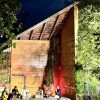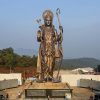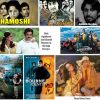Goa is abuzz with excitement as vintage bike and car owners, users, collectors and fans are decking […]
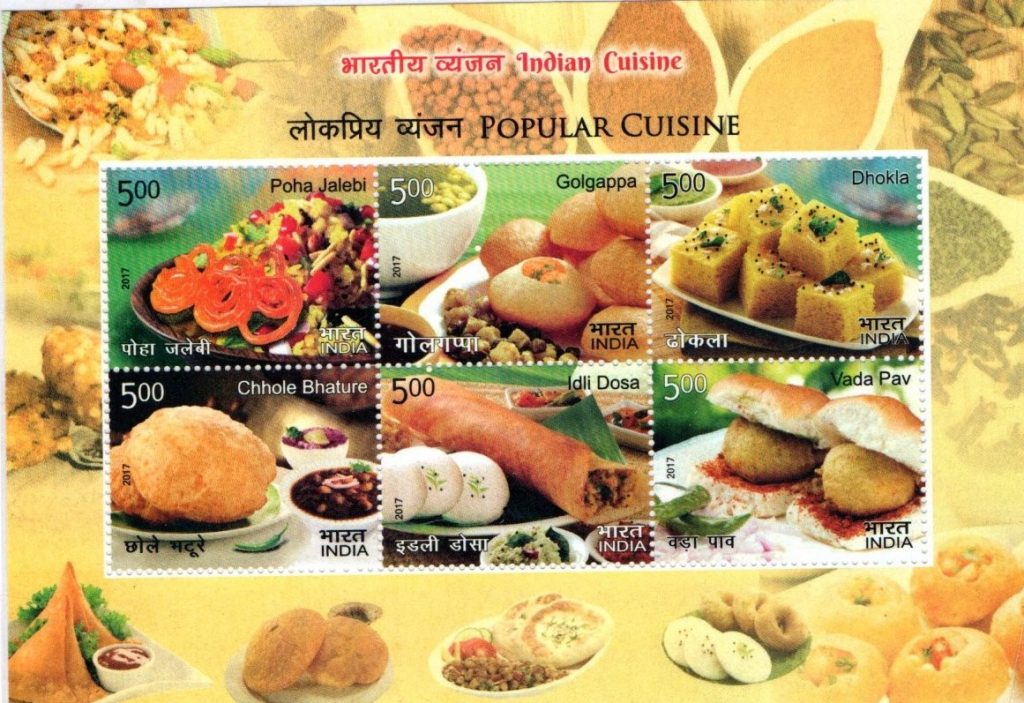
A PHILATELIC TRIBUTE TO INDIAN CUISINE!By Dr MR Ramesh Kumar
July 19- July 25, 2025, Life & Living July 18, 2025INDIAN cuisine consists of a variety of regional and traditional cuisines native to the Indian subcontinent. Given the diversity in soil, climate, culture, ethnic groups, and occupations, these cuisines vary substantially and use locally available spices, herbs, vegetables, and fruits. Our Indian streets are full of popular cuisines – tasty and famous with the food lanes acquiring their fame from the speciality of the food item most loved and served.
I have been ardent foodie and food lover and have had the opportunity to taste and test a variety of dishes, snacks, sweets and savouries through the length and breadth of the Indian subcontinent, from street food, popular cuisines to regional cuisines, festival cuisines and divine “bhog prasad” and some more. So when the Department of Posts, government of India released a set of 24 stamps in Se-tenant and miniature sheet form, way back on November 3, 2017 I lapped it up.
In this article of mine, I have tried to include the variety of food which I had during my visits to various places in India and abroad, on various personal and official assignments….
Popular Cuisines
Some of the very popular cuisines are depicted in the miniature sheet given below:
Poha Jalebi
POHA is rice flakes and this is a very simple dish to prepare. It can be modified to include as many vegetables as you want. In my home, this is an occasional breakfast or an evening tiffin/snack to have when you are back from school. Poha chutney is a typical Konkani dish of the Gowda Saraswat Brahmin community.
In India, it is known as jilebi in Malayalam and jalebi in Hindi. It is often served with sweetened condensed milk dish, rabri or eaten with kachori and vegetable curry in the northern part of the country. It is a popular snack in Kerala and a popular breakfast snack in Uttarakhand and Uttar Pradesh, equally popular as dessert at celebrations in other parts of the North India. Jilebi is a breakfast dish in several parts of Uttar Pradesh and Uttarakhand.
I had the fortune to have it when I was doing my Remote Sensing Course at Indian Institute of Remote Sensing, Dehra Dun way back in 1986.
Poha and jalebi together is a new combination for me and this apparently is a popular street food in Indore, Madhya Pradesh.
Golgappa
GOLGAPPA name varies depending on the region. In Maharashtra, it is known as “pani- puri.” Haryana it is known as “paani patashi”; in Madhya Pradesh “fulki”; in Uttar Pradesh “pani-ke-batashe/padake”; in Assam “phuska/puska”; “pakodi” in parts of Gujarat, “gup-chup” in Odisha, Andhra Pradesh, South Jharkhand, Chhattisgarh; “phuchka” in Bengal, Bihar and Nepal. It is popular by the name of “golgappa” in Pakistan and some parts of Northern India. “Pani-Puri” was added to the Oxford English Dictionary on March 10, 2005. On April 8 “Happy Pani-Puri Day” is celebrated all over India.
Golgappa consists of a round or ball-shaped, hollow puri (a deep-fried crisp flatbread), filled with a mixture of flavored water (known as imli pani), tamarind chutney, chili powder, chaat masala, cooked potato mash, onion or cooked chickpeas. This is street food which I relished in several of the beaches in Mumbai and even Goa.
Dhokla
DHOKLA is a vegetarian preparation that is found mainly in the Indian state of Gujarat and parts of the neighbouring states. It is made with a fermented batter derived from legumes like chickpeas, pigeon peas and urad (skinned black lentils) and rice. Dhokla is usually served for breakfast or as an evening snack, also as a side dish for a main meal or simply as a snack. There are several different versions of dhokla, prepared with different ingredients and amount of chickpea flour. Some of them are: khatta, rasia, moong dal, khandavi, toor dal sandwich, rava mixed dal, green peas, meetha, besan and khaman dhokla.
Rice and split chickpeas (chana dal) in a standard ratio (to achieve desired texture and taste) are soaked overnight. The mixture is ground and fermented for four to five hours or overnight. Batter is then spiced with the addition of ground ginger-green chilli pepper, coriander leaves, a small amount of baking soda, stirred and steamed.
The fermented batter is steamed for about 15 minutes on a flat dish and cut into pieces. These chopped pieces are seasoned in hot oil with mustard seeds. Asafoetida and chopped green chillies can also be fried and, sometimes, an equal amount of water. The pieces are then removed from the dish. Sometimes it is also fried in hot oil with cumin seeds. It is usually served with deep fried chillies and chutney made from coriander. It is garnished with chopped green coriander and sometimes freshly grated coconut.
This is one my favourite Gujarati dishes and we make it at home quite often, or else buy it from the Gujarat Lodge in Panjim (now closed down).
Chole Bhature
CHOLE BHATURE is a food dish popular in the Northern areas of the Indian subcontinent. It is a combination of chana masala (spicy white chickpeas) and bhatura/puri, a fried bread made from maida. Although it is known as a typical Punjabi dish, there are varied claims around the origin of dish. Chole bhature is often eaten as a breakfast dish, sometimes accompanied with lassi. It can also be street food or a complete meal and may be accompanied with onions, pickled carrots, green chutney or achaar. Some of the best chole bhature I have eaten is at Khan Market, New Delhi and in Haridwar near the various temple premises.
Chole is prepared by cooking chickpeas and adding spices such as cumin, coriander seeds, turmeric powder, and chili powder. Onion, garlic, and ginger are also added for additional flavor. Bhature is prepared by combining flour, salt, and oil, and kneading the dough. The dough is rolled out into circles and deep-fried until it puffs out as a bhature.
Idli Dosa
IDLI or idly are a type of savoury rice cake, originating in the Indian subcontinent, popular as breakfast food in Southern India. The rice cakes are made by steaming a batter made from fermented black lentils and rice. Idli has several variations, including Rava Idli, which is made from semolina. Regional variants include Sanna of the Konkan states such as Goa, Mangalore, etc.
A dosa is a thin pancake much loved in South India, it’s made from a fermented batter of rice and black lentils. It is somewhat similar to a crepe in appearance, although savoury flavours are generally emphasized (sweet variants also exist). The most popular dosa batter is of the ingredients of rice and black gram, ground together to a fine smooth batter with a dash of salt, then fermented. Dosa are a common dish in South Indian cuisine, but now have become popular all over the Indian subcontinent. Dosa are served hot along with chutney by tradition and sambar in recent times. Other accompaniments include chutney powder (a fine groundnut and lentil powder called simply podi).
The most popular version is the masala dosa which comes with a filling of potato masala. Mysore masala is a spicier version of this. saada (plain) is without filling; paper dosa is a thinner, crisper version. Rava dosa is made crispier using semolina. Some of the best dosa and especially Masala dosa which I have eaten at the Indian Coffee House eateries which branch out throughout Kerala, but their main ingredient is beetroot, which is quite different from the traditional masala dosa. In fact, I am fortunate enough to have eaten masala dosa in the different continents of the world. But the best one which I relish till today is the one served at Bharat Coffee House in Broadway, Ernakulam, Kerala.
Vada Pav
VADA PAV is another popular Indian street food recipe comprising of two items, a small loaf of bread called pau which is stuffed with a deep fried batata vada. This snack is also popularly referred as Indian burger or aka Bombay Burger because it hails from Maharashtra or Marathi cuisine. Generally, vada-pau is an evening snack but can also be adapted for breakfast.
Vada-pav is much easier and quicker to assemble once you have the critical part which is the potato vada; a good recipe will see it crispy on the surface and savoury within. The potato vada or patties are slightly different from the conventional aloo bonda or vegetable bonda. Basically, the batata vada stuffing is mainly made from potatoes without onion or peas combination. Also, it enshrines a strong flavour of garlic, ginger and coriander leaves; moreover, the patties may be typically oval shaped when compared to round bonda.
The pav has been one of our favourite food with a varieties of “bhajies” in Goa. One of the most famous of Goan eateries, which serves a variety of different types of bhajies to go with Goan pav or “pao” is served at Café Ashwini at St Inez, Goa.
Regional Cuisines
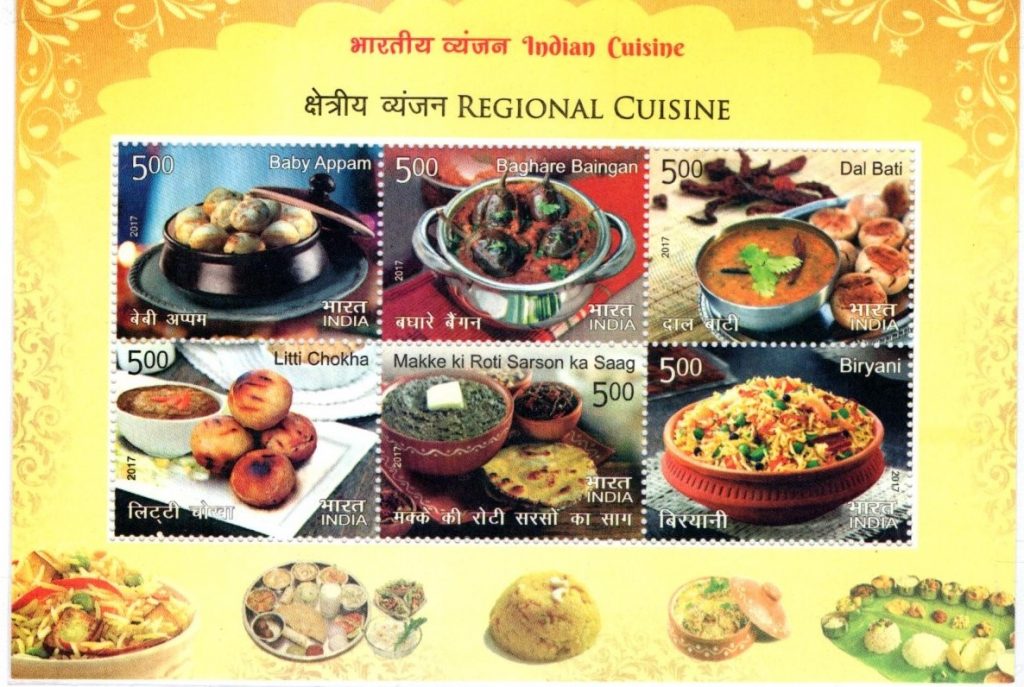
CUSINE differs across India’s diverse regions as a result of variation in local culture, geographical location (proximity to sea, desert, or mountains) and economics. It also varies seasonally, depending on fruits and vegetables which ripen during a particular season during the year.
The festival of Onam, also referred to as Thiru-Onam or Thiruvonam, falls in the first month of the Malayalam calendar, Chingam. It is one of the most popular festivals celebrated in Kerala. Onam preparations and celebrations go on for a period of ten days.
Malayalis around the world celebrate the 10-day harvest festival of Kerala and the return of the legendary King Mahabali, by organising a grand feast, also known as Ona Sadhya. Traditionally, over 24 vegetarian dishes are prepared for this grand feast served on banana leaves. Preparations for this auspicious occasion usually start a few days in advance.
I fondly remember the several Ona Sadhya we used to prepare with much fanfare in Goa, when I joined the National Institute of Oceanography (NIO) at Dona Paula in Goa, way back in 1982. Another Ona Sadhya which I remember very well is one celebrated in Munich, Germany in a church where there were several people of Kerala origin in the year 1996.
Some of our very popular Regional Cuisines are depicted in the miniature sheet given below:
Baby Appam
THESE are called appam or baby appam or paniyaram or appe or kuzhiappam. Appe or appum or appam or kuzhiappam is the simplest, a quick savory snack from South India – also made of rice and urad dal batter. Rice and urad dal are washed and soaked overnight, then ground and fermented to make a savoury batter. This batter can be used for making dosai or uttappam as well. Many variations are possible with this basic recipe, making them even more fun and delectable.
Unni appam, is another variety called karollappam, this is a small round snack made from rice, jaggery, banana, roasted coconut pieces, roasted sesame seeds, ghee and cardamom powder — fried in oil. Variations of this organic, spongy fried batter using jackfruit preserves instead of banana, has been common from the late 2000s. It is a popular snack in Kerala. In Malayalam, “unni” means small and “appam” means rice cake.
Baghare Bainganan
BAGHARE BAINGAN is a Hyderabadi cuisine curry featuring eggplant (brinjal). It also complements as a side dish with the Hyderabadi biryani. “Bagara” means tempering the oil with spices, a traditional Indian practice of cooking to enhance the aroma of a dish. This dish is an amalgamation of rich Nizami cuisine (which is largely influenced by Awadhi cuisine) with the flavour of rustic Andhra cuisine and so blending altogether into a hallmark dish of the region.
The magic of baghare baingan lies in its unique blend of spices, eggplants here are twice cooked. Deep velvety purple baby eggplants are first stuffed with flavoured coconut-groundnut-sesame paste. Then tempered in hot oil and finally simmered in fragrant and spicy gravy slowly absorbing the flavour and acquiring a rich, creamy taste.
Baby eggplants are integral to this dish, they gives a unique texture to the dish. But if you do not have access to these, then you can substitute it with small purple eggplants which are readily available everywhere.
Dal Bati
DAL-BAATI-CHURMA is a complete dish and very popular in Rajasthan. The traditional way to prepare this recipe is to first coarsely mash the “baati” and then pour pure ghee on top of it. It is served with the daal (lentils) and spicy garlic chutney. Dal-batti-churma is also served with gatte-ki-kadi or sabzi (a besan or gram flour speciality). It is commonly served at festive meals, including religious occasions, wedding ceremonies and birthday parties in Rajasthan. “Dal-baati-churma” is a combination of three different food flavors — daal (savory lentils), baati (rich bread) and churma (sweet). Most folk who think Rajasthan usually think daal-baati-churma to feast on.
Litti Choka
MUCH like baati, litti needs very little water and may be baked in the sun without the use of any utensils. It even has similar ingredients – it is made of wheat, ghee and water. However, liti is softer than baati and has a deliciously spicy filling of sattu, a mixture of ground pulses and cereals.
While litti was traditionally served with chokha (charred brinjals cooked with tomatoes, mashed potatoes, green chillies and onions), the combination has undergone many changes – as each new ruler of a region created individual preferences. In a Mughal court, litti was served with shorba (rich creamy soups) and payas (a slow cooked spicy broth), while the Britishers preferred it with curry. However, it is the classic combination of litti-chokha (believed to be a favourite of Rani Laxmi Bai) that has survived over the ages and still fascinates foodies across the country.
Makke-DI-Roti, Sarson-DA-SAAG
MAKKI-DI-ROTI and sarson-da-saag are one of the most famous Punjabi combo meals, really needs no introduction. It is prepared with mustard leaves, accompanied with makki-di-roti (corn flour flatbread). The luscious green sarson-da-saag (mustard greens) tastes fabulous with makki-di-roti and butter (white “loni” butter). This is a much loved North Indian traditional combo meal. It is mainly a winter season special meal in Punjab. Perfect for those who love healthy, hearty, traditional food.
This rich and irresistible dish is easy to prepare. Makki-di-roti is made from makki atta or maize flour and sarson-da-saag is a rich mustard greens dish. Mustard leaves can be a little bitter in taste so this preparation is often combined with “khatti palak” or sweet spinach greens, when combined cooked with milder tasting spinach, ghee/butter and spices, the taste is heavenly. I was fortunate to taste this heavenly combination, when I staying with a Punjabi family in Southampton, United Kingdom as a Paying Guest during my UNDP Fellowship tenure at the University of Southampton.
Biryani
BIRYANI or “biriyani” a mixed rice dish originating amongst the Muslim community of the Indian subcontinent. It is made with rice, spices, either with meat (chicken, beef, goat, lamb, prawn, fish), or eggs or vegetables such as potatoes.
Ingredients for biryani vary according to the region and the type of meat and vegetables used. Meat (of either chicken, goat, beef, lamb, prawn or fish) is the prime ingredient with rice. As is common in dishes of the Indian subcontinent, vegetables are sometimes also used when preparing biryani. Corn may be used depending on the season and availability. Navratan biryani tends to use sweeter, richer ingredients such as cashews, kismis and fruits, such as apples and pineapples.
There are many types of biryani, whose names are often based on their region of origin. For example, Sindhi biryani developed in the Sindh region of what is now Pakistan, and Hyderabadi biryani developed in the city of Hyderabad in South India.
Hyderabadi biryani is India’s most famous biryani; some say biryani is synonymous with Hyderabad. The crown dish of Hyderabadi cuisine, Hyderabadi biryani developed under the rule of Asaf Jah I, who was first appointed as the governor of Deccan by the Mughal Emperor Aurangzeb. It is made with basmati rice, spices and goat meat. Popular variations use chicken instead of goat meat. There are various forms of Hyderabadi biryani, such as kachay gosht-ki-biryani or “dum” biryani, where goat meat is marinated and cooked along with the rice. It is left on a slow fire or dum for a fragrant and aromatic flavor.
Thalassery biryani is a variation of biryani prepared in Kerala. It is one of the many dishes of the Malabar Muslim community and very popular.
Festival Cuisines
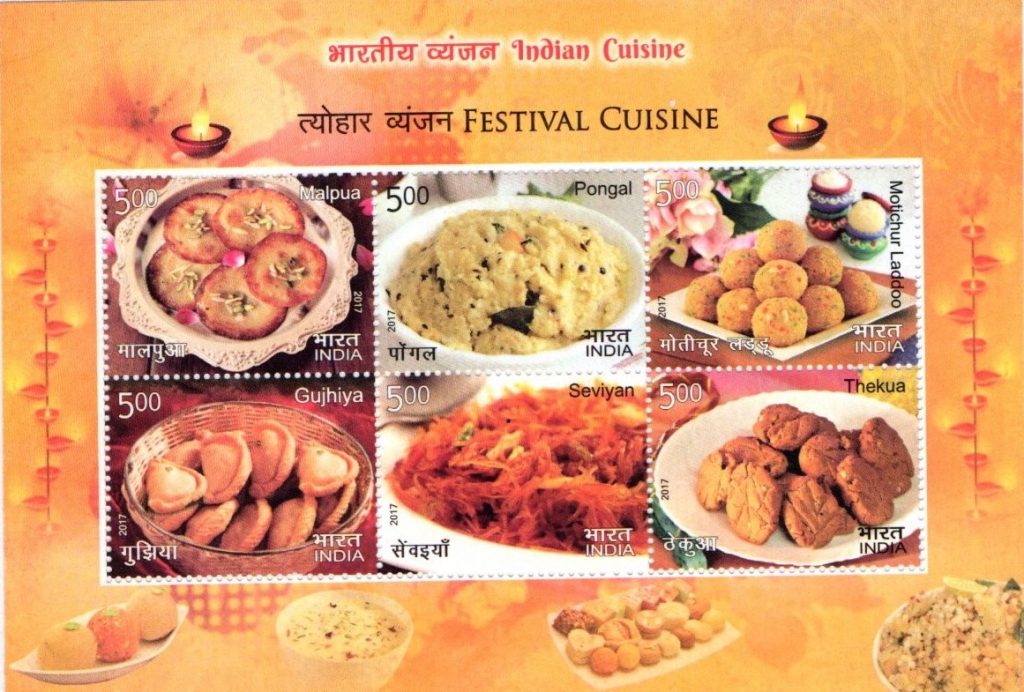
INDIA is one of the few countries in the world that can boast of people from different backgrounds, different religions, living together and celebrating each other’s festivals with enthusiasm. Our different religions provide India with a lot of variety in festivals celebrated all year long. As a matter of fact some people say that India is a country where a festival is celebrated every day!
Each and every festival brings with it the joy of the festival with ceremonious food that is awaited for all year long. The special recipes provide a great opportunity to discover and taste the festival delicacies of Indians. Everybody is allowed to forget their health related problems and enjoy the food and sweets to their heart’s content.
Some of the very popular festival cuisines are depicted in the miniature sheet given below:
Malpua
MALPUA is a traditional North Indian sweet of sugar syrup coated pancakes made with all-purpose flour, curd (yogurt), spices, khoya (dried milk solids) and topped with nuts. Malpua recipe is made for festivals such as Holi, Diwali and also special occasions, it is available as street food in Odisha. It is also one of the Chappan Bhog food offered to Lord Jagannath at the Puri Temple.
Pongal
PONGAL is a popular recipe with both savory and sweet versions. It is made during the popular Pongal festival or other Hindu festivals in South India and offered to the deities as “naivedyam” (offerings of food to the divine beings).
The savory pongal recipe known as “ven pongal” or “khara pongal” and is laced with the wonderful flavors of cumin, asafetida, curry leaves, ginger and black pepper. Not to forget the lovely aroma of desi ghee in it.
Ven pongal can be made in many ways. You may add grated coconut and even a mix vegetables like carrots, French beans, green peas, cauliflower, capsicum or corn. Add some oats to making an oats pongal for a healthy variation. Millets and even cracked wheat (dalia) can be included to make healthy pongal varieties.
Sweet pongal is a creamy, sweet porridge of rice, green mung lentils and flavored with cardamom and dry fruit. Sweet pongal is also known as “sakkarai pongal” and “chakkara pongal” in South Indian languages is a festive dish, traditionally made during the Pongal festival of South India.
Motichur Ladoo
MOTICHUR laddu are a soft, delish melt-in- the mouth laddu made mainly with gram flour, sugar and spices. The gram flour batter is fried to make tiny balls or “boondi” and mixed with sugar syrup, nuts or seeds, and later shaped to neat round balls. These are typical laddu which I used to relish during my school days on festival occasions, along with the sweet “besan” or roasted gram flour laddu which are not so common in the public domain. I also love rava ladoo which are much more easier to make than the first two laddu.
Gujhiya
GUJHIYA are prepared in Uttar Pradesh, Rajasthan, Gujarat and Bihar regions during Holi and Diwali festivities. Dry ones are called “pedakiya” in Bihar. Pedakiya are very popular in Bihar and relished by everyone. It is holy offering for Chhath Puja. There are two types of pedakiya made in Bihar: one with suji/rawa (semolina) and another with khoa. In suji pedakiya, suji is roasted in ghee with sugar, almonds, cardamom, raisins and other nuts and then deep fried in ghee. In khoa pedakiya, pure khoa is mixed with nuts and sugar and then deep fried. It is also called “ghughra” in Gujarat, “karanji” (Marathi) in Maharashtra, “somas” (Tamil) in Tamil Nadu, “garijalu” (Telugu) in Telangana and, “kajjikayalu” (Telugu) in Andhra Pradesh and, “karjikayi” or “karigadubu” (Kannada) in Karnataka. They are all wheat flour fried sweet dumplings stuffed with dry or moist coconut delicacies.
In Goa, Goans prepare a similar sweet on the occasion of their festivals: Hindus for Ganesh Chaturthi and Christians for Christmas, and the sweet is called “nevri” or “neuri” (plural “neureo”). In Odisha the “karanji” has either a coconut based or curd cheese based filling.
Seviyan
SEVIYAN is also known as semiyan in Hindi. This is a quick sweet recipe that may be prepared in less than 20 minutes. Sweet vermicelli is usually made during festive occasions such as Eid. Meethi seviyan is a sweet dessert made from whole wheat vermicelli, ghee, milk, sugar and dry fruits.
Thekua
THEKUA, also known as “khajuria” or “thikari,” is a dry sweet from the Indian subcontinent. It is very popular in Bihar, Uttar Pradesh and the Terai region of Nepal. Thekua is a revered prasad offering to god, during Chhath puja. It has been used as a sweet snack for centuries in these places. Thekua is a sweet that is made of wheat flour, sugar or jaggery, coconut along with ghee and dry fruits.
Bhog Prasad
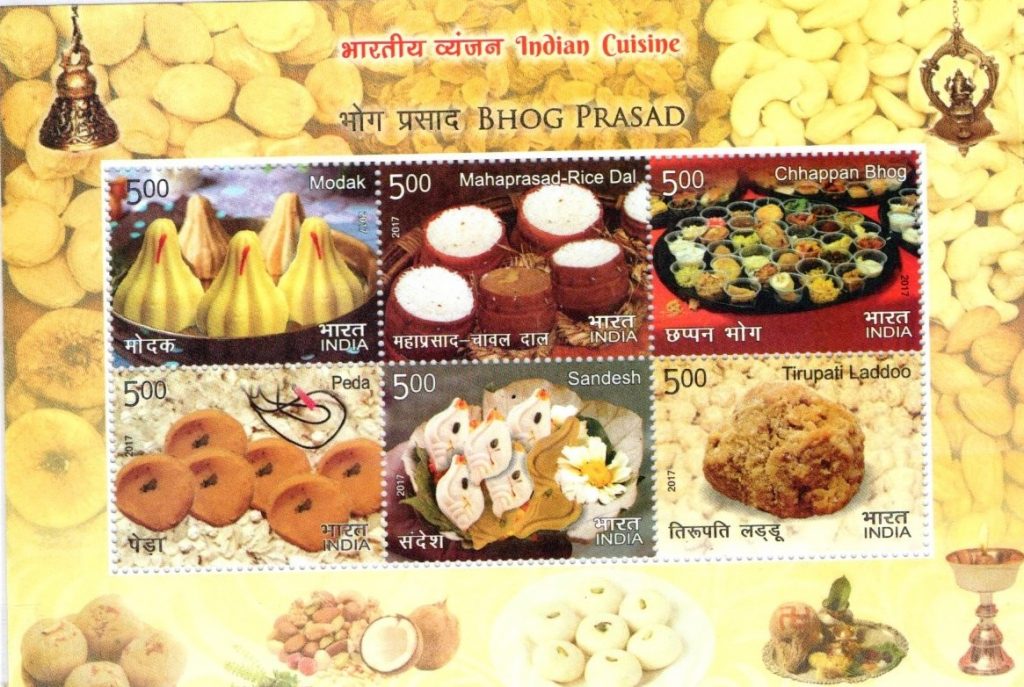
PRASAD is typically a vegetarian dish that is given as offering to divine deities in temples. Prasad is usually offered to God during the beginning of puja and once the puja is over it is distributed among the devotees. According to religious texts, it is believed that the prasad which is offered to god is first enjoyed by the divine beings and so blessed for serving to devotees.
Whenever I think of bhog prasad there are a few which comes readily to my mind. There is the modak of Ganesh festivals in Maharashtra, Goa and Karnataka, Chhappan Bhoga (56 bhoga or mahaprasad) offered to Lord Jagannath in Puri, Odisha, ladoo offered to Lord Balaji of Tirupati and the Aravana Payasam given as “naivedyam” (blessed food) at the Sabarimala Ayyappa temple, Kerala.
There are so many foods offered to our gods and goddesses and while it is the intention and the faith that matters, making an extra effort is always more satisfying to the human soul.
Some of the very popular Bhog Prasad are depicted in the miniature sheet given below:
Modak
MODAK is an Indian sweet dumpling dish popular in many Indian states and cultures. According to Hindu belief the modak is one of the favourite dishes of Lord Ganesha (Hinduism’s elephant deity) and is therefore offered in puja gatherings. The sweet filling in a modak is of freshly grated coconut and jaggery, while the outer soft shell is made of rice flour or wheat flour mixed with khava or maida flour dough.
Modak is Bhagwan Ganesha’s favorite sweet and made in many Hindu homes during the first day of the Ganesh Chaturthi festival. The most popular variety of modak that is made is “ukadiche modak” (steamed modak) which features in Maharashtrian traditional cuisine.
The South Indian variation of modak is kozhukattai or kolukattai which is made during Vinayaka Chaturthi in the Southern Indian states of Kerala and Tamil Nadu. There is another variant of the modak where the outer crust is made from whole wheat flour and we have the fried modak.
Mahaprasad Rice Dal
MAHAPRASAD is the term applied to items offered to Lord Jagannath in the holy temple of Puri in Odisha. It includes different types of rice like ghee rice, mixed rice, cumin seed and ginger rice and dal (pulses) like sweet dal, plain dal mixed with vegetables, mixed dal. The Indian cuisine encompass a wide variety of regional, traditional cuisines.
Chhappan Bhog
CHHAPPAN BHOG is a special collection of 56 items of food served to Lord Krishna on Krishna Janmashtami. The word “Chappan” translates to 56, and “bhog” to divine food. Lord Krishna would usually be served eight food items every day, but he didn’t consume any food during the seven days of fasting. So at the end of the seventh day, everyone celebrated Krishna Janmashtami with 56 items of food (eight multiplied by seven) in gratitude of divine worship.
Peda
PEDA is a fairly general term that refers to a wide variety of spherical or round, delicious milk-based fudge treats. Typically they are made with a combination of dried milk solids (khoya or mawa), sugar and milk, and any preferred flavoring spices. The mixture is simmered on the stovetop until reduced to a thick consistency, which is then cooled and shaped.
Peda is a sweet dish hailing from the Indian subcontinent. It originated from Mathura, Uttar Pradesh, India. Usually prepared in thick, semi-soft pieces, its main ingredients are khoa, sugar and traditional flavoring including cardamom seeds, pistachio nuts and saffron. Peda colour varies from creamy white to a caramel. The word peda is also generically used to mean a sphere of any doughy substance such as flour or khoa. Variant spellings and names for the dessert include pedha, penda (in Gujarati) and pera.
Pedha originate in the city of Mathura in present-day Uttar Pradesh. The Mathura peda is the characteristic variety from the city. From Uttar Pradesh, the peda spread to many parts of the Indian subcontinent. Thakur Ram Ratan Singh of Lucknow, who migrated to Dharwad (in present-day Karnataka) in the 1850s, introduced distinct pedha here. The Dharwad pedha now enjoys its own identity and is much relished. The Dharwad pedha is famous.
As with laddoo, pedha are sometimes used as prasadam in religious services.
Sandesh
SWEET and delicious sandesh (called shondesh in Bengali language) is a popular sweet from Bengal and prepared during festivals like Durga Puja. Being a milk-based sweet it is made with chenna or paneer and needs a handful of ingredients.
Sandesh is a dessert, originating from the Bengal region in the eastern part of the Indian subcontinent, created with milk and sugar. Some recipes of sandesh call for the use of chhena or paneer (which is made by curdling the milk and separating the whey from it) instead of milk itself.
I have had the good fortune of tasting a variety of sandesh during my several official trips to Kolkatta at various places, each sandesh tasted very different in colour, ingredients and shape. For more complex and elaborately prepared sandesh, the chhana is dried and pressed, flavored with essence of fruits, and sometimes even colored, and cooked to many different levels of consistency. Sometimes it is filled with syrup, blended with coconut or kheer, and molded into a variety of shapes such as conch shells, elephants and fish. Another variant is nolen gurer sandesh, which is made with gur or jaggery. It is known for its brown or caramel colour that comes from nolen gur.
Tirupati Ladoo
ONE of my most of favourite bhog prasad which I still relish is the Tirupati laddu. Some of our friends or relatives who visit to pray at the Lord Balaji Temple in Tirupati, invariably return with the prasadam of this ladoo and we always get a very small portion of it for it is divine prasadam and not to be feasted upon greedily like a sweet!
Types of bhog prasad offered to Lord Venkiteswara:
For “Divine Break Fast” after the ringing of the first bell in the temple, “anna prasadam” (divine offering to the god) like “matrannam, mudgannam (ghee pongal), tintrinirasannam (tamarind rice-pulihora) dadhyodhanam (curd rice), gudannam (jaggery rice, chakra pongal), sakannam (kadambam rice made of vegetables), shakkarannam (ravakesari)” are prepared. Besides these, four other kinds of snacks or panyaramulu (savories) are also served to the Lord of Tirupati daily. These include “ladukam (laddu), mashappam (vada), gudappam (appam), chakrappam (dosa).”
After the ringing of the second bell, lunch or Raja Bhogam menu is presented to the Lord before to the devotees present. The delicacies during this hour includes “suddhannam (basic white rice), pulihora gudannam, dadhyodhanam, seera or sakkarabath.” For dinner or Shayana Bhogam after the third bell ringing, “marichyannam or pepper rice, chakrappam, dosa, ladukam, mashappam, sakkarannam” are offered.
Tirupati laddu or “SriVari Laddu” is the laddu sweet offered as naivedhyam to Lord Venkateswara at Tirumala Venkateswara Temple in Tirupati, Chittoor District, Andhra Pradesh, India. This special laddu is given as prasadam to devotees after their darshan in the temple. The laddu prasadam is prepared within the temple kitchen known as Potu by the temple board of the Tirumala Tirupati Devasthanams. The famous Tirupati laddu has received Geographical Indication tag which entitles only the Tirumala Tirupati Devasthanams to make and sell the laddu.
Also included are the popular typical dishes and traditional breads of Goa in the form of picture postcards.
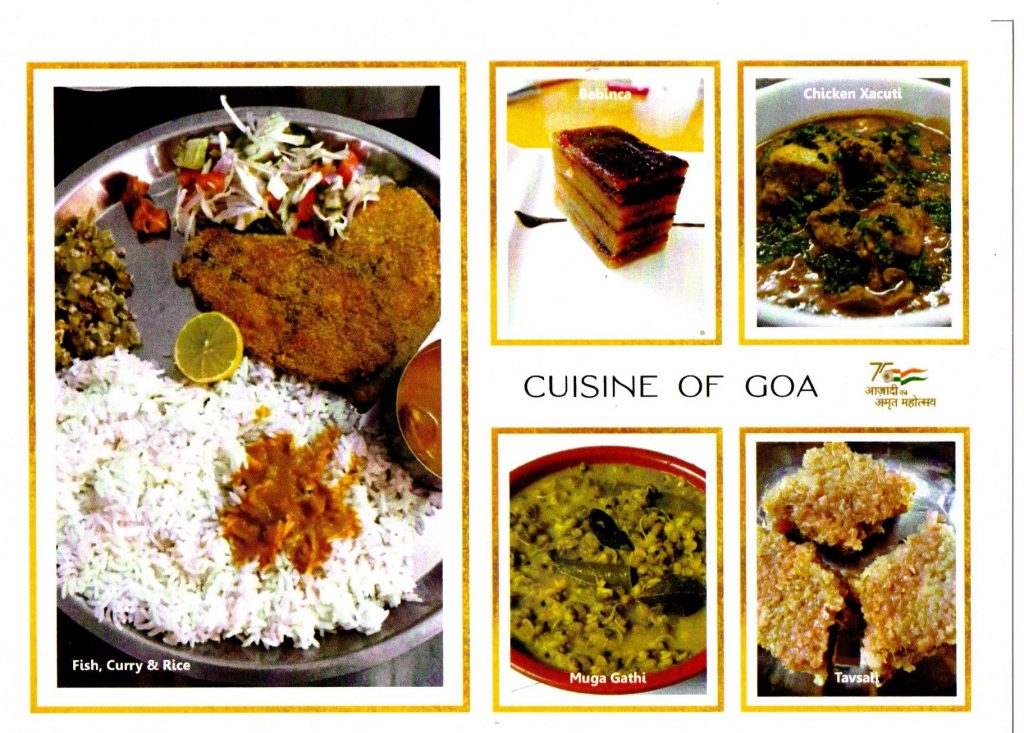
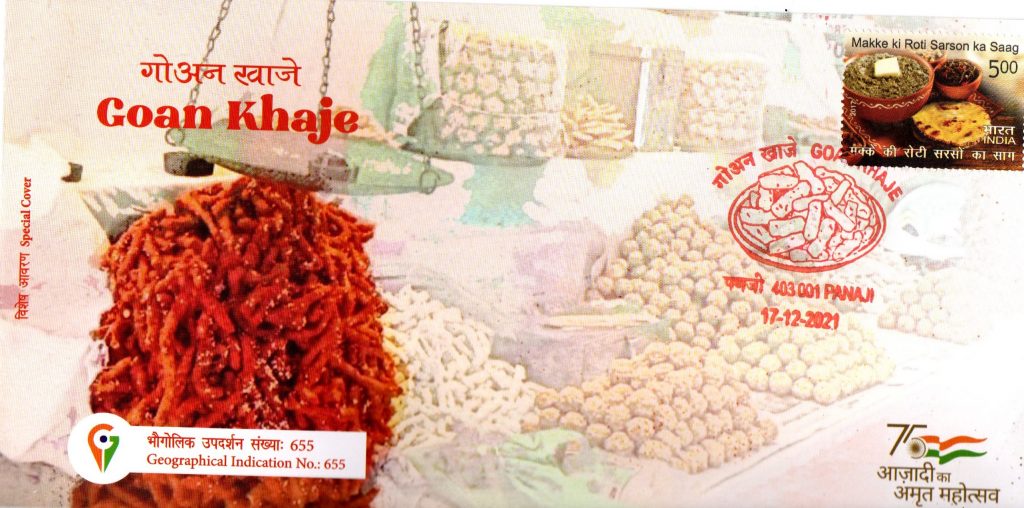
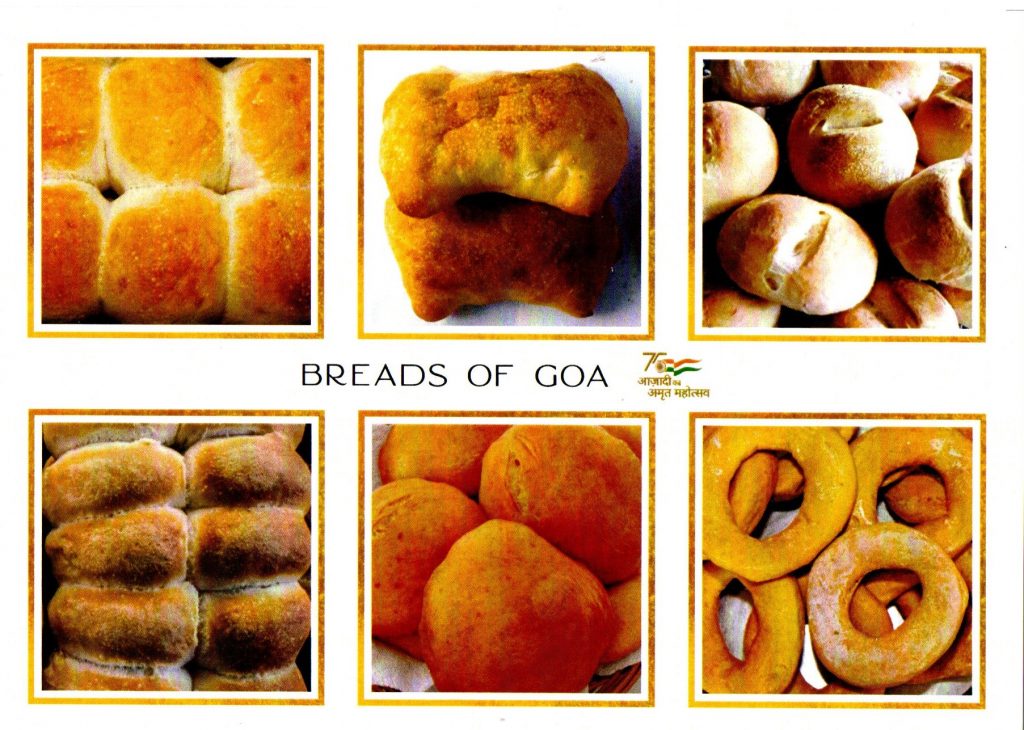
Dr MR Ramesh Kumar was a Chief Scientist (Retd), Physical Oceanography Division,National Institute of Oceanography, Goa. He is an ardent and well known philatelist. His collection of stamps features in many exibitions to do with philately.







